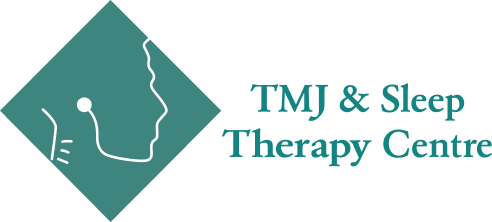Could a Hidden Tongue or Lip Tie Be Holding Your Child Back?
Tongue and lip ties are tight bands of tissue that restrict movement and quietly interfere with feeding, breathing, speech and facial development. If feeding your infant is a struggle or speech does not come easily, it is natural to wonder whether something deeper is going on. You may have tried every latch technique and still find nursing painful or see that your baby is not gaining weight.
If your preschooler speaks softly, refuses certain foods, has trouble pronouncing certain letters or snores loudly at night, we can help you understand why it’s happening and guide you toward a solution.
At TMJ and Sleep Therapy Centre of Northern Indiana, we look beyond temporary fixes to address the root cause of problems, helping your child thrive from the inside out.
What Are Tongue and Lip Ties?
Everyone has a small band of tissue under the tongue and behind the upper lip. A tongue tie occurs when the lingual frenulum is too short or tight, keeping the tongue from moving freely. A lip tie happens when the labial frenulum prevents the upper lip from lifting properly.
Though some ties do not cause problems, many interfere with nursing, chewing and speaking, and can influence the way the jaws and airway develop. Contrary to popular belief, these tissues rarely stretch out on their own and children rarely “grow out of” these conditions.
Early assessment is critical to determine whether intervention is needed.
Recognizing the Signs at Every Stage
Tongue and lip ties are not only about feeding difficulties. These tiny bands of tissue can affect your child’s ability to eat, speak, breathe and grow comfortably. Your child may benefit from a tongue and lip tie evaluation if they experience:
- Infants (birth to twenty four months) – difficulty latching or staying latched; milk leaking or clicking noises while feeding; reflux like symptoms or gas; slow weight gain; limited tongue movement; maternal nipple pain; restless sleep or mouth breathing.
- Toddlers and Young Children (two to twelve years) – speech delays or unclear articulation; picky eating or gagging on textures; open mouth posture or tongue thrust; mouth breathing or snoring; dental crowding or spacing issues; forward head posture or shoulder tension; behavioural or sensory processing challenges.
If any of these signs resonate with your family, a comprehensive evaluation can determine whether a tongue or lip tie may be contributing to your child’s difficulties.

How We Diagnose Tongue and Lip Ties
Our evaluation goes beyond a quick peek under the tongue. We assess how your child nurses, chews, swallows and speaks; we examine oral posture, breathing patterns and facial symmetry. For older children, we may use imaging to visualize the jaws and airway. Our team collaborates with lactation consultants, myofunctional therapists and cranial osteopaths to ensure we are seeing the whole picture rather than just one tissue. Not every frenulum needs to be released — we only recommend treatment when restrictions truly affect function and development.
Our Comprehensive Treatment Approach
- Gentle Laser Frenectomy and Functional Frenuloplasty – We use a precise CO₂ laser to release the tight tissue in seconds. This technique minimizes bleeding and discomfort and healing often begins immediately. For older children with thicker tissues, a functional frenuloplasty may selectively loosen muscle as well as membrane for optimal mobility.
- Myofunctional Therapy – Before and after a release, our therapists teach exercises that strengthen the tongue, lips and facial muscles. This helps prevent reattachment and encourages proper breathing, chewing and swallowing.
- Bodywork and Cranial Osteopathy – For infants and children, gentle hands on therapy can relieve muscle tension, improve posture and support nervous system balance, making the release and recovery smoother.
- Age Specific Care – Infants often nurse right away after their procedure; toddlers may need a bit of numbing gel, and older children sometimes benefit from light sedation. We tailor care to your child’s age and needs, explaining each step so you feel confident and informed.
Why Early Treatment Matters
Releasing a restricted frenulum is not just about immediate feeding relief. Addressing tongue and lip ties early can:
- Improve feeding and growth – Babies latch more effectively, transfer milk efficiently, gain weight steadily and experience less gas or reflux. Mothers often find nursing becomes comfortable and sustainable.
- Support healthy facial and airway development – Proper tongue posture helps shape the jaws, widen the palate and create space for nasal breathing, reducing the risk of sleep disordered breathing and malocclusion.
- Enhance speech and chewing – Children articulate sounds more clearly, enjoy a broader range of foods and swallow with ease.
- Promote calm and restful sleep – Better breathing reduces snoring, mouth breathing and night waking, supporting healthy behaviour and development.
Early intervention also supports orthodontic and airway preparation. When a child’s jaws are underdeveloped or they habitually breathe through the mouth, a tethered tongue or lip may be contributing. Addressing these restrictions early guides healthy craniofacial and airway development and may reduce the need for more invasive treatment later.
Why Families Choose Us
Parents choose the TMJ and Sleep Therapy Centre because we treat more than a small piece of tissue. Our board certified providers, pediatric sleep specialists, myofunctional therapists and cranial osteopaths collaborate to create a personalized plan for your child. We use advanced laser technology for minimally invasive releases, and we provide thorough aftercare and follow up. Our child friendly environment and empathetic guidance help families feel safe and supported every step of the way.
Frequently Asked Questions
How do I know if my baby has a tongue or lip tie?
Does a tongue or lip tie always affect breastfeeding?
My baby can stick her tongue out past her lips. Can she still have a tie?
Is the procedure painful or will it leave scar tissue?
Laser frenectomy is minimally invasive and takes seconds. While any wound can produce some scar tissue, the precision of a laser minimizes collateral damage. Discomfort is typically mild and lasts only a day or two.
Are stretches or exercises necessary after the release?
Post release stretches help prevent reattachment of the frenulum. Myofunctional exercises retrain the tongue and lips to support proper movement and posture; we will guide you through them.
